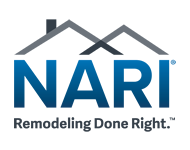
In urban development, repurposing industrial spaces has emerged as a lucrative strategy. As industries evolve and urban landscapes change, the adaptive reuse of industrial structures presents a unique opportunity to breathe new life into abandoned or underutilized spaces! From factories to warehouses, these once-vibrant industry hubs now hold the potential for innovation, creativity, and community revitalization.
Understanding the potential of industrial spaces
To improve your commercial space, you need to gauge its potential first! So, before tackling the process of repurposing, assess things like structural integrity and adaptability! You should also work to identify unique features for preservation or enhancement. Similarly, consider utilizing spacious layouts and high ceilings to create versatile environments. Understanding the potential of these spaces can help you optimize functionality and aesthetics! Therefore, comprehensively understanding the potential of industrial spaces allows for the creation of the most appealing and commercially viable environments.
Market demand and feasibility analysis
Before diving into redevelopment projects, you must thoroughly research current market trends and demand for repurposed spaces. This analysis provides valuable insights into the potential success of the project and aligns the proposed redevelopment with market needs. Additionally, conducting a feasibility study helps assess the project’s economic viability. Therefore, by evaluating factors such as construction costs, potential revenue streams, and projected return on investment, businesses can make informed decisions about whether to proceed with the redevelopment. Finally, a comprehensive feasibility analysis helps identify any potential obstacles or challenges that may need to be addressed, too!
Legal and regulatory considerations
When repurposing an industrial space, you must navigate legal and regulatory considerations effectively. For example, zoning laws and building codes are important to maintain compliance and avoid potential setbacks during the redevelopment process. Environmental regulations also play a significant role in repurposing projects, requiring thorough assessment and remediation of contamination or hazards. By addressing these legal and regulatory requirements early in the planning stages, businesses can streamline the development process! In this case, legal experts and environmental consultants provide valuable guidance and guarantee that all necessary permits and approvals are obtained.
Designing for functionality and aesthetics
Functionality and aesthetics are both important when repurposing industrial spaces. It’s always important to work on curb appeal at least a little! Thankfully, collaborating with architects and designers can maintain optimal use of space while enhancing visual appeal. Incorporating elements like ample lighting, modern fixtures, and attractive landscaping can also improve the look and feel of the space. Integrating sustainable design principles enhances aesthetics and promotes energy efficiency and environmental responsibility. Balancing functionality with aesthetics is key to creating inviting and inspiring environments that attract tenants and customers alike! This way, businesses can maximize the potential of their repurposed industrial spaces and create vibrant, visually appealing destinations for work.
Financing and investment strategies
Whether through grants, tax incentives, or public-private partnerships, identifying the right funding is key to the success of any project. Here, calculating the return on investment (ROI) and assessing long-term revenue streams helps in making the best financial decisions. Similarly, considering alternative financing options such as crowdfunding or venture capital can provide additional flexibility and support. Collaborating with financial advisors and real estate experts can further offer valuable insights into navigating the complexities of financing. This way, businesses can unlock the necessary resources to bring their vision to life and maximize the ROI!
Community engagement and stakeholder involvement
Engaging the community and involving stakeholders can be helpful steps in repurposing an industrial space. Here are some helpful steps:
- Open communication and collaboration enable businesses to address concerns and gain valuable insights into the needs and preferences of residents.
- Involving stakeholders from the project’s outset builds trust and fosters a sense of ownership, leading to greater support and buy-in for the redevelopment efforts.
- Hosting community meetings, workshops, and outreach events further provides opportunities for residents to voice their opinions and contribute ideas, guaranteeing that the project aligns with the community’s values and aspirations!
- Establishing partnerships with local organizations and institutions can further enhance community engagement and promote inclusive development.
Repurposing for innovation and creativity
Another potential approach is to aim to provide hubs for innovation and creativity. These adaptive reuse projects breathe new life into old industrial structures, transforming them into vibrant entrepreneurship hubs. After all, by providing affordable workspace and cultivating a collaborative environment, these repurposed spaces attract startups, artists, and creatives, driving economic growth and revitalizing communities. Besides, the unique character and history of industrial buildings inspire creativity and imagination, fueling innovation and artistic expression. These spaces also often serve as catalysts for urban renewal, attracting investment and spurring further development in surrounding areas! So, embracing repurposing initiatives for innovation maximizes the potential of underutilized industrial spaces and promotes a culture of creativity and ingenuity that benefits the local economy.
Addressing challenges and overcoming obstacles
From contamination issues to structural deficiencies, every project comes with its unique set of hurdles. However, businesses can navigate these obstacles effectively by anticipating potential challenges and developing robust contingency plans. Engaging with environmental remediation and structural engineering experts can provide valuable insights and guidance in overcoming technical challenges. What’s more, staying flexible and adaptable allows businesses to pivot and adjust their approach as needed.
Of course, you’ll face some logistics and practical challenges, such as struggling with removing current equipment from the scene or something similar. In such cases, you can easily solve the problem by working with the right professionals, like Helix Moving & Storage. They will combine the latest trends in moving technology with your requests. They can handle specialized packing and moving services and can even hold the equipment or other items in their own storage facility until you need them! You can also use their helixmove.com website to get advice and create a better budget for everything!
Creating vibrant mixed-use developments
Through integrating residential, commercial, and recreational elements, these developments offer a dynamic and diverse environment for residents and visitors alike! For example, incorporating amenities such as retail shops, restaurants, and entertainment venues fosters a sense of community and encourages social interaction.
Moreover, including wellness features such as parks, fitness centers, and green spaces in your development promotes a healthy and balanced lifestyle among residents. By carefully curating the mix of uses within the development, businesses can create a vibrant and thriving neighborhood that meets the needs and desires of its occupants. Likewise, enhancing public spaces and amenities further enhances the appeal of mixed-use developments, attracting residents and visitors to the area!
Your approach to repurposing industrial spaces
The process of repurposing industrial spaces is a testament to the ingenuity and adaptability of urban development. Reimagine the potential of these structures, embrace creative solutions, and we can transform forgotten relics into thriving centers of activity and innovation! Through collaborative efforts and a commitment to sustainability, a repurposed industrial space can revitalize communities and inspire a brighter, more vibrant future for future generations!











